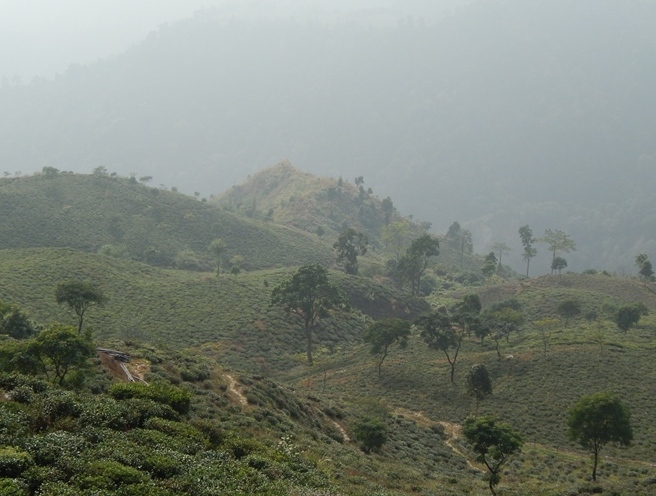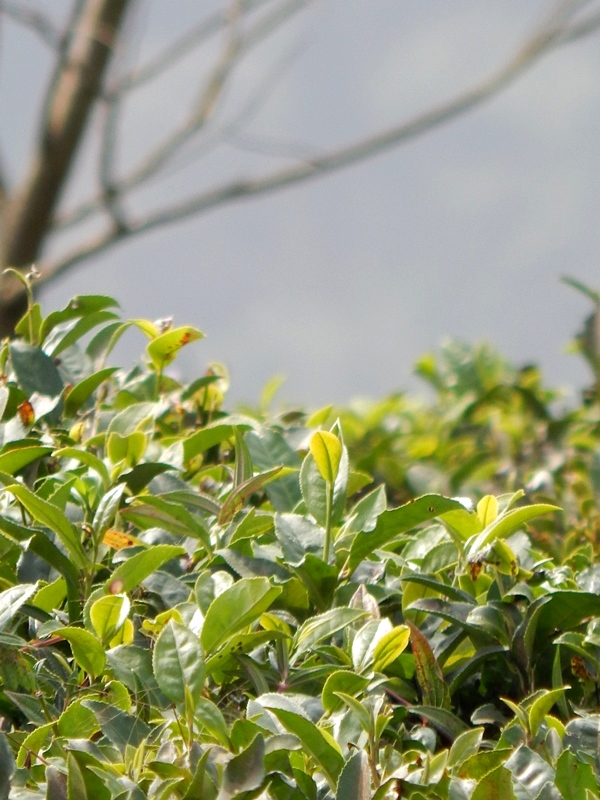What kind of tea is used in Darjeeling black tea? General situation of growth conditions of Darjeeling Tea
Although it may seem absurd to change tea from bitter waxy leaves on bushes to spirits in pots, tea makers actually followed the basic steps invented by Chinese farmers in the 18th century. Tea is part of the genus Camellia, and there are three main varieties used to produce tea: sinensis, assamica and cambodia. Tea begins its life with bright green leaves on the branches of the evergreen camellia tree. These trees can grow to 30 feet or more; they thrive in the mottled shade of most subtropical climates. White and pink flowers produce edible (though somewhat bitter) teas. Soft, glossy leaves have fine serrated edges and slightly pointed tips. The tea brewed from freshly picked tea leaves is incredibly bitter; it is only after they have dried up that they emit a unique aroma and flavor. Camellia (Camellia sinensis variety) is a strong plant with stronger cold and drought resistance than other varieties, so it usually grows at high elevations and harsh climates. "Sinensis" means "from China", that is, the country where tea was first discovered. This tea variety, which is native to China's Yunnan Province, is also thriving in the mountains of Darjeeling in northeastern India.

At the same time, botanists found a completely different kind of tea tree in nearby Assam province, a tea tree with large leaves, which they called Camellia sinensis var. Assamica). In that flat and low-lying area, a large number of Assam leaves grew rapidly. In the wild, some trees can grow up to 90 feet tall and live for centuries, but in tea gardens, they generally live no more than 50 years. Finally, Cambodia Camellia (Camellia sinensis var. The characteristics of cambodiensis) are not as valued as Chinese camellia and Assam varieties, so they are rarely used in tea cultivation. However, it is excellent for hybridization and is sometimes used to create new varieties. As you can see, not all tea trees are the same, so there are many variables in the process of growing tea. Soil, climate, altitude, latitude and other conditions are important factors for growing tea. The same kind of tea tree can even produce different tastes of tea, depending on where and how it grows. On the whole, however, tea plants require a lot of Rain Water and, depending on the plant type, it is best to grow in tropical or subtropical regions, although some grow in steep mountains, altitude and climate help plants develop higher concentrations of aromatic essential oils. create richer seasoned tea. Although they are generally hardy and adaptable, they don't like the winter environment (which is one reason why we don't grow tea in upstate New York!) In other words, tea trees do benefit from climate change, which helps to form tastes. Stress caused by climate change can disrupt chloroplasts in tea and trigger plant responses in an effort to retain chlorophyll in tea, thereby improving the taste of tea. I'll explain it in detail later!
Important Notice :
前街咖啡 FrontStreet Coffee has moved to new addredd:
FrontStreet Coffee Address: 315,Donghua East Road,GuangZhou
Tel:020 38364473
- Prev

Darjeeling black tea is produced in which country? What is the annual output of Darjeeling black tea?
Darjeeling, Xizang Dorje Ridge, city, northernmost West Bengal, northeastern India. It is located about 305miles (490km) north of Calcutta and about 7000 feet (2100 m) above sea level. Darjeeling is located on a narrow ridge of the Sikkim Himalayas. It suddenly falls to Dalangi.
- Next

Counterattack "three and a half meals" to harvest the boutique coffee market? Starbucks Nestl é jointly launched a series of Starbucks Cup products.
Drink instant at Starbucks? Are you sure you won't be beaten? No, maybe you can see from the little Starbucks Cup that you are a loyal fan of Starbucks. Yes, on October 18th, Starbucks China announced this new friend on Weibo: Starbucks Suixing Cup super-boutique instant coffee. According to the official introduction, Suixing Cup system
Related
- Why does hot American coffee taste bitter? Difference in proportional concentration between hot American and ice American
- Is espresso stored overnight in the refrigerator harmful to your body? Is frozen coffee better than freshly ground coffee?
- What parameters and proportions of water temperature should be used to grind and brew fresh coffee beans? Why can't I drink freshly roasted coffee right away?
- Customers have "changed" Manner's new products! Shop assistant: Please don't mess around!
- Remove sockets in customer areas at Starbucks stores?! Netizen: I won't go if I really tear it down
- What is the difference between the taste steps of sun-dried coffee and washed coffee? Why is sun-cured coffee sweeter and washed coffee sour?
- The recipe for salty grapefruit dirty is revealed! Coffee Festival salty grapefruit dirty coffee making materials parameters ratio milk share!
- How about the flavor of Sunlight 74158 at Sidamo Banshaha Mathieu Processing Factory in Ethiopia? 74158 Share the proportion of coffee brewing parameters!
- What effect does Italian American coffee with filter paper have? Will coffee taste better if it is put on filter paper at the bottom of the powder bowl?
- What is the color difference in coffee beans? What are the characteristics of honey processed coffee beans? Why are the anaerobically treated coffee beans uneven in color?

